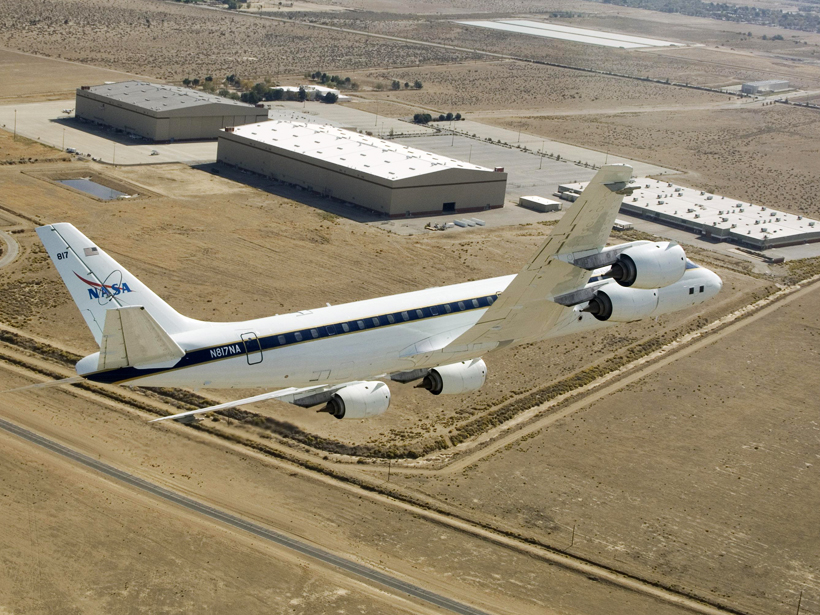Source: Geophysical Research Letters
The composition of Earth’s atmosphere is a cocktail of gases created by coincident processes, including man-made and natural emissions, photochemical transformations, surface deposition, and transport. The interactions between these processes are especially important in forested regions where biogenic emissions from things like plants and soils—or even geologic sources like volcanoes—play a big role in atmospheric composition. Scientists are looking for new ways of constraining these processes to better understand the links between natural activities, anthropogenic perturbations, air quality, and the planet’s changing climate.
Wolfe et al. tackled this problem using aircraft observations of eddy covariance fluxes, the turbulent exchange of gases between the surface and the atmosphere. Research targeted the convective boundary layer (the lowest 1–2 kilometers of the troposphere), where the atmosphere meets Earth’s surface and mixing is most rapid.
A complex cycle shapes the composition of the convective boundary layer. First, reactive gases like volatile organic compounds and nitrogen oxides are produced at the surface by natural and anthropogenic processes. Interactions with sunlight convert these gases into products like ozone and organic aerosols. Atmospheric pollutants are then returned to Earth through deposition or transported by winds.
By flying over the Ozark Mountains during NASA’s Studies of Emissions, Atmospheric Composition, Clouds and Climate Coupling by Regional Surveys (SEAC4RS) mission, the authors leveraged the suite of instrumentation on the NASA DC-8 to derive emission and deposition rates, oxidant levels, aerosol uptake, and other parameters for a range of reactive gases.
The researchers found that ecosystem-level airborne fluxes are ideal for improving atmospheric models. They propose extending this methodology to other ecosystems—like agricultural lands, oceans, or cities—to build a chemical data set diverse enough to help demystify the processes shaping the composition of the lower atmosphere. (Geophysical Research Letters, doi:10.1002/2015GL065839, 2015)
—Lily Strelich, Freelance Writer
Citation: Strelich, L. (2016), Trace gas exchange offers key insight into atmospheric processes, Eos, 97, doi:10.1029/2016EO044169. Published on 27 January 2016.
Text © 2016. The authors. CC BY-NC 3.0
Except where otherwise noted, images are subject to copyright. Any reuse without express permission from the copyright owner is prohibited.

